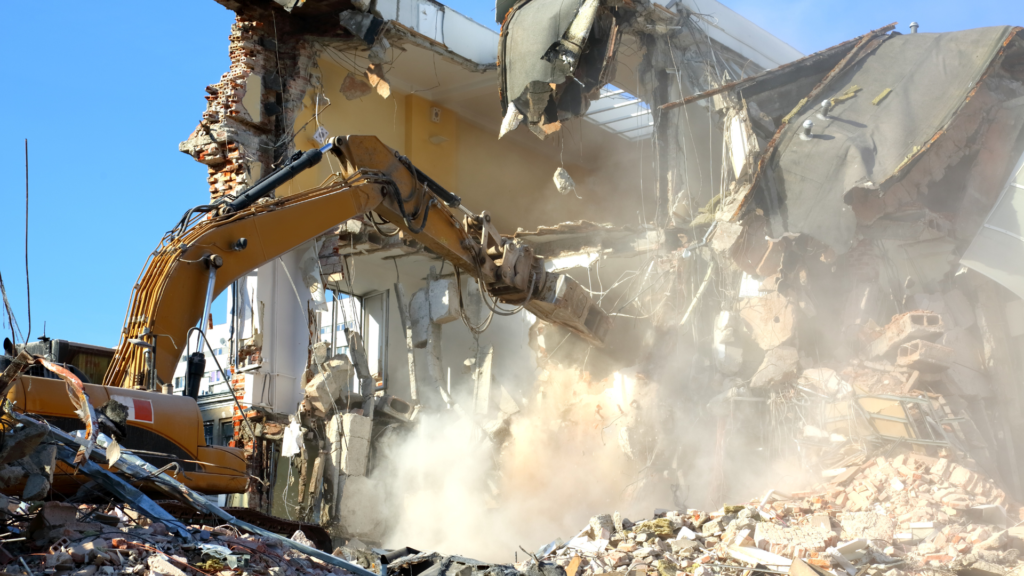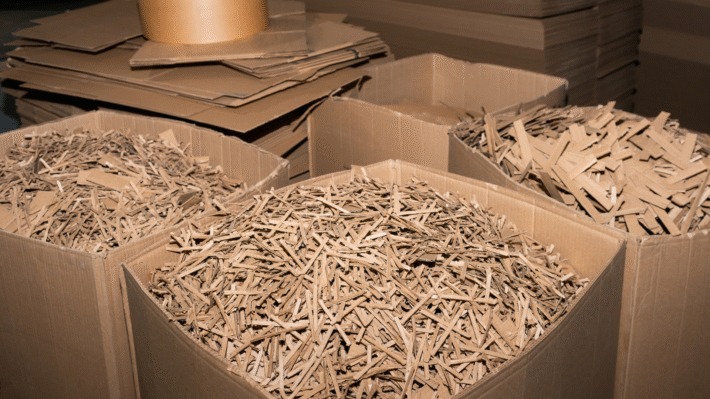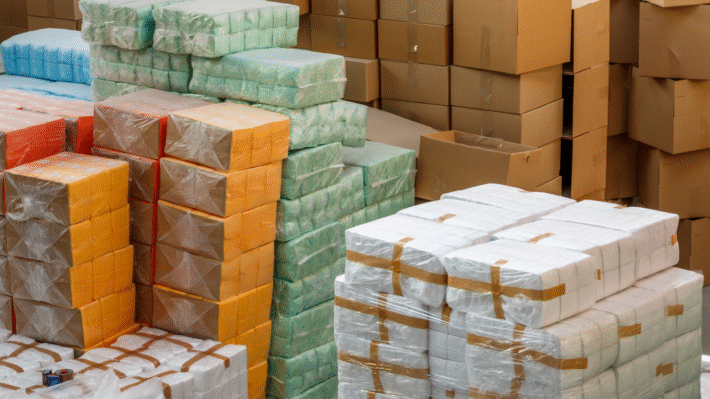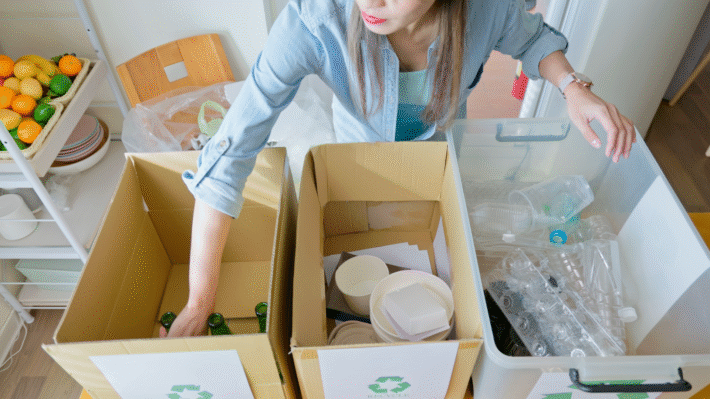Advancing Circularity in Construction by Transmuting Debris into Valuable Resources

Welcome to a thrilling exploration into the world of creating circularity in construction debris recycling. You’re about to discover a compelling strategy for turning a major environmental problem into a game-changing resource. Imagine, instead of mounting landfills, we have a recycling powerhouse spurring economic growth, job creation, and sustainable building practices! Sounds like the stuff of sci-fi? Well, it’s not just possible, but within our grasp, as we dive into a journey of separation strategies, repurposing techniques, and the technology enhancing it all. We’re about to break down the walls — actually, recycle them — to construct a greener future. So, fasten your seatbelts as we construct a path towards circular construction, where waste morphs into a much-needed resource! Who knew garbage could look so good!
Understanding Circular Construction
Welcome folks! Today we’re going to chew on something with some real meat; something that has the potential to turn the construction world on its head, and help our planet breathe a little easier. Today, we’re diving headfirst into the concept of Circular Construction.
From Linear to Circular
What is a Linear System?
Imagine a straight line. Start from one point, move all the way to the other end, and then…what? That’s a linear system for you. The construction industry has traditionally been one big old linear system. We extract resources, use them to build, then demolish and throw away. It’s a one-way ticket to waste hell.
But here’s where things can take a turn (literally).
Benefits of Closed-Loop Systems
Instead of a straight line, now imagine a circle. We extract, we build, we demolish, and then – hold your breath – we reuse or recycle. Instead of being discarded, waste materials become resources for new construction. This closed-loop approach, my friends, is the heart of circular construction. It’s like giving Mother Nature her own recycling bin. She gives us geology, and we give her clean, recycled materials. Everybody wins!
And get this, beyond the green goody points, switching to circular construction holds real economic value. Think about it. Our resources aren’t getting any more abundant, but recycling and reusing? That’s a well that doesn’t dry up. Plus, it can create new job opportunities.
Key Stakeholders in Circularity
So, who are the movers and shakers who can turn this circle of a dream into reality?
Role of Construction Firms
Construction firms are right on the building frontlines. They’re the masterminds, creating our homes, offices, and cities. By embracing circular practices, firms have the power to drive monumental change. Let’s face it; if the builders aren’t on board, this circular ship won’t sail.
Demolition Contractors’ Contributions
Behind every thriving construction site, there lies a demolition site that’s given up its ghost. Demolition contractors have a crucial role in getting that ghost (aka construction and demolition waste) into the circular groove. Their job doesn’t stop at knocking things down; they need to ensure materials are ready for their next gig.
Government and Regulations
Rules, incentives, penalties – that’s the power toolkit in the hands of regulators. Governments, through their policies, can be the guiding (or pushing!) hand persuading the industry to embrace circular practices.
Consumer Influence
Last but definitely not least, it’s you, me, us, the consumers. We’re the ones living in these buildings, and our voices matter. By demanding more sustainable structures, we’re directly influencing the supply chain, thus driving the market towards circular solutions.
So that’s the big picture of circular construction for you folks. Up next, we’ll be diving deeper into the nitty-gritty of separating demolition waste, but for now, take a minute to imagine a world where construction isn’t about taking and wasting, but about a constant cycle of reusing and recycling. A world where every broken brick finds a new home. Exciting, right? Stay tuned for more!
Separating Demolition Waste
When we talk about circular construction and waste management, separating demolition waste is a major player in the game. It sets the groundwork—quite literally—for everything else to happen, from identifying valuable materials to preparing them for the recycling process.
Pre-Demolition Audits
Before the first swing of the wrecking ball, there’s smart work to be done. That’s where pre-demolition audits come into the picture.
Why Pre-Demolition Audits Matter
Without a pre-demolition audit, you’re essentially searching for a diamond ring in a bag of mixed garbage—you might find it, but it’s going to be a messy, time-consuming, and costly process. Not quite appealing, huh?
Pre-demolition audits are all about preventing that mess. They help us identify, classify, and quantify the types of materials present in a building before it’s demolished. This information is a gold mine! It guides the separation process, reduces waste, and even fetches a better price for recyclables.
Steps Involved in Audits
Let’s bring you into the world of pre-demolation audits:
- Documentation review: We swot up—that means we study up on—building records and architectural plans, and speak with people who know about the building’s construction and renovations.
- Walk-throughs: We put on our sturdy boots and take a tour of the building, noting down details of materials and their locations.
- Testing: We take tiny samples of materials like paint or concrete for laboratory analysis to determine their composition.
- Reporting: We compile all our findings in a comprehensive report which spells out exactly what’s in the building and where it’s located.
On-Site Sorting Techniques
Once we know what we’re dealing with, we can dive into the demolition part and start sorting out those valuable materials!
Manual vs. Automated Sorting
You might suppose sorting robots are a far-off future concept, right? But guess what! They’re here, and they’re revolutionizing the way we handle demolition waste.
Sure, manual sorting has its place. It’s cost-effective for smaller jobs and when dealing with materials that require a human touch. But it’s also more time-consuming, challenging in dealing with heavy materials, and face it, not the most appealing job.
Automated sorting, on the other hand, is faster, more efficient, and safer. The game-changer in our grand quest to create circularity in construction!
Using AI, Robotics, and Sensors
With robots, AI, and sensors stepping onto the sorting floor, we’re accelerating into the future of waste management.
Robots can work tirelessly, accurately sorting out materials based on their properties. AI systems learn from their encounters, becoming smarter with every sort. Sensors, equipped on sorting lines, detect different types of materials and enable the robots to sort accordingly.
Together, they’re making our hard hat zone a smarter place!
Material-Specific Methods
In the world of sorting, one size does not fit all. Different materials call for different techniques.
For instance, concrete can be crushed and ferrous metals can be sorted out with magnetic separators. Wood, plastics, and drywall each have their own specific methods for effective separation and recycling.
It might sound like a lot of variety, and it is. But with our tech-savvy assistants, we’ve got it covered!
So, folks, that’s how we go about the serious business of separating demolition waste. From pre-dem meetings to the whir of robotics, the journey is about transforming ruins into resources, step by systematic step!
Repurposing Waste Materials
Let’s roll up our sleeves and dive into how we can take our smelly old construction trash and turn it into something truly remarkable! This is the meat and potatoes of the circular construction philosophy.
Recycling Concrete Aggregate
You wouldn’t believe how much concrete the construction world crunches through each year. Wouldn’t it be great if we could give that old, broken concrete a second chance?
Advantages of Recycled Aggregate
Crushed up concrete might not look pretty, but she’s got some serious potential. Instead of shelling out dough for new gravel for your next project, recycled aggregate is pocket-friendly and just as sturdy. Plus, you’re helping Mother Earth by keeping concrete out of landfills. Repeat after me, folks – reduce, reuse, recycle!
Processes for Recycling Concrete
So, you’re wondering how we take chunks of worn-out concrete and transform them into sleek aggregate? Well, it’s all thanks to crunching machines that pound them into submission. After they’re crushed and screened to remove any unwanted materials, they’re ready to be used again. It’s recycling in its purest form!
Reclaimed and Upcycled Wood
What if I told you that the old wooden planks from a torn-down building could become your new kitchen table? It’s not magic – it’s upcycling!
Uses for Reclaimed Wood
We’ve all got a soft spot for things vintage, right? Well, reclaimed wood has got vintage in spades, and it’s highly versatile too. It can be used for flooring, furniture, or even artwork. Plus, reusing wood prevents logging and thus saves our forests.
Upcycled Wood Products
Upcycling is simply making do with what we have and turning it into something spectacular. Wood waste can be carved into fancy sculptures, turned into jewelry, or even repurposed into birdhouses. And the best part is that these upcycled products are unique and have their individual history.
Innovative Products and Techniques
I know, up until now, you’ve been thinking, “This all sounds great, but it sounds like a lot of manual work.” Brace yourself because some truly out of this world technology is about to blow your socks off.
3D Printing with Recycled Materials
This isn’t a sci-fi movie, folks – 3D printing with recycled materials is happening right now! Think about printing out entire houses from recycled plastics or concrete. It’s super cost-effective, saves a ton of resources, and it’s pretty darn cool if you ask me.
Creating Upcycled Products
Last but certainly not least, the creation of upcycled products takes waste and makes it… not waste. Think about turning old bottles into light fixtures or using broken tiles to create beautiful mosaics. The sky’s the limit when it comes to upcycling, folks. It’s crafting, but with a green twist!
So there you have it. By recycling concrete into aggregate, reclaiming and upcycling wood, and using innovative techniques like 3D printing, we can turn our waste into valuable resources! It’s the circular construction way!
Challenges in Circular Construction
The road to change isn’t always smooth, and the path to circular construction is a bumpy one. It’s like a puzzle with many pieces—logistics, costs, quality control, and the heavy weight of consumer resistance. But hey, solving puzzles is fun, right?
Logistics and Costs
Converting construction trash into treasure doesn’t come without its fair share of headaches. One of these challenges lies in transportation and storage.
Transportation and Storage Issues
It’s one thing to sort the waste. It’s a whole other game to transport and store these materials safely. Imagine having a pile of old bricks or a mountain of metal scrap. You need to move them to the recycling facility. Now, that’s not just a quick drive down the block. It requires trucks, manpower, and, most importantly, fuel. And guess what, when these resources reach the recycling center, they need space—lots of it—to be stored until they are processed. Doesn’t sound so simple now, does it?
But don’t worry! There’s always a silver lining, and in this case, it’s the possibility to find cost-effective solutions.
Cost-Effective Solutions
Embracing circular construction doesn’t have to crash your bank account. Creative solutions can turn this challenge into an opportunity. For instance, on-site processing of materials can reduce transportation costs. Building close partnerships with recycling facilities could offer mutually beneficial terms. Just like two puzzle pieces perfectly fitting together, right?
Quality Control Measures
Once the logistics puzzle is solved, we face another hurdle—quality control. But remember, every problem has a solution, and this one is no different.
Ensuring Quality of Recycled Materials
No one wants a building made of weak bricks or wobbly wood, right? That’s why ensuring strong, stable materials from recycling processes is vital. We need rigorous tests, stringent standards, and meticulous monitoring—a sort of recycling ‘quality police,’ if you will.
Standardization and Consistency
Aren’t you annoyed when you buy a puzzle and discover that two pieces are identical? That’s why quality control is so essential—it prevents ‘puzzle piece’ confusion and ensures every recycled material meets the same, consistent standards. With standardized processes and consistent products, we’re well on our way to solving the big circularity puzzle.
Overcoming Consumer Resistance
Just when you think the jigsaw is complete, you notice the last piece—the consumers. But wait, there’s no piece that fits! That’s because we need to shape this piece through educational campaigns and by building consumer trust.
Educational Campaigns
No amount of recycling will make a difference if no one is willing to buy recycled products. That’s why we need to tell people about our cool, Earth-friendly puzzle and how they have an essential piece to contribute. Through education, we can show consumers that recycled materials are not only safe, but they’re also saving the planet!
Building Consumer Trust
Trust isn’t built overnight—it’s like slowly putting together a jigsaw puzzle. But with quality assurances, open communication, and proof of environmental and economic benefits, consumers might just start choosing recycled products. They will realize they’re not just buying a product; they’re contributing to a better world. So you see, while circular construction might seem like a massive, challenging puzzle, every piece counts towards the larger picture—a sustainable and circular future. Just like completing a puzzle, the satisfaction of accomplishing circularity in construction will be well worth the effort.
Innovations in Debris Recycling
If you’ve ever watched ants, you’ve got an idea of what happens in construction debris recycling. Just like ants break down food and carry it to their colony, advanced technologies are now helping us pick apart waste and give it a new life. How cool is that?
Adopting Advanced Technologies
In our pursuit of reducing waste, let’s first turn to two tech superstars – Artificial Intelligence and Blockchain. Kinda like Batman and Robin in the tech world.
AI and Machine Learning
Artificial Intelligence (AI) doesn’t just beat us at chess. It’s also becoming a pro at identifying and sorting materials. AI combines with machine learning (which is like a super fast learning sponge) and can learn to pick apart demolition waste, right down to different types of bricks and wood. This ain’t your regular pick-n-sort!
With AI, we are training our robotic buddies to get smarter with every sort and pick they perform. And let me tell you, they are learning fast. They identify materials, even if they are covered in dust or dirt. Pretty neat, huh?
Blockchain for Material Tracking
Now, here comes a tongue twister – Blockchain! Don’t get scared by the name, it’s a really helpful pal of ours. Basically, it’s a way to track materials from the moment they leave a site to the moment they get a new life.
Think about being able to point at a brick in a wall and say, “Hey, that brick came from the 100-year-old building downtown!” Now, that’s some bragging rights!
Design for Disassembly
We aren’t just stopping at smart tech to deal with the waste we have now. We’re also thinking ahead and designing buildings to be taken apart and used again.
Principles of DfD
Design for Disassembly (DfD) is like building a LEGO set with an idea that one day, you’ll take it apart to build something else. But instead of LEGOs, we’re doing this with real, big buildings. DfD makes sure every nail, every brick, and every beam can be reused. It’s like construction’s way of thinking about its future!
Real-World Applications
DfD isn’t just a cool idea. It’s already out there in the world! People around the globe are using DfD right now to create buildings that conserve resources and reduce waste.
For example, there are buildings where entire walls can be moved or removed without needing to tear or break anything down. That’s like moving house, but instead of packing, you’re actually moving the house!
No more demolition causing big piles of waste. We’re moving into a future where buildings come apart neatly, ready to use again.
There’s already a lot to be excited about in debris recycling. But, we’ve only scratched the surface so far. Stay tuned for more in the world of recycling and waste. The future is looking brighter (and cleaner) with every brick we save!
Policy and its Impact
Policy plays a massive role in shaping the actions and decisions taken by companies and organizations. They’re the big rules that guide us all in the right direction. Let’s dive deeper into how policy impacts our aim to create circularity in construction debris recycling.
Incentives and EPR
Every story has a hero and in our tale of circular construction, incentives and Extended Producer Responsibility (EPR) are our caped crusaders. They’re the ‘carrots’ and ‘sticks’ that drive companies to do the right thing.
Economic and Environmental Benefits
Incentives can come in many forms. They could be tax breaks or grants for firms that adopt recycling practices. On the other hand, EPR is a policy approach under which producers are given the responsibility for the treatment of post-consumer products. This shifts the responsibility upstream to the producer and away from municipalities. The beauty of all this? Both economic and environmental benefits emerge from these policies. They help firms recover and reuse materials, saving cost and reducing demand for virgin materials. On the environmental front, it helps reduce landfill waste and lowers carbon emissions. It’s a win-win-win situation!
Implementation Strategies
But how do we get there? It’s all about smart implementation. A robust tracking system is needed to ensure fair and effective EPR. Incentive programs need to be easy to understand and access. Guidelines, strict protocols, and auditing processes need to be established for all involved in this intricate dance of waste handling.
Public-Private Partnership Opportunities
Going solo may be cool in a cowboy movie, but in the world of circular construction, it’s all about teamwork. That’s where public-private partnerships come in.
Collaboration Models
To put it simply, public–private partnership is a cooperative arrangement between one or more public and private sectors. They could work together to improve recycling facilities, bring in advanced technologies, or provide training and education. The possibilities are endless!
Successful Case Examples
And it’s not just talk. There are real-world examples where this works splendidly. One such example is how the Netherlands-based company, Primum, worked with the Dutch government to establish Madaster, an online material library that improves waste management in construction. Collaboration is the secret sauce that makes circular construction achievable and efficient.
Creating circularity in construction debris recycling is a journey, but with the right policies and collaborations in place, we can turn our waste into worth. Let’s keep the conversation going. Stay tuned for more insights on this exciting journey from waste to resource.
Envisioning the Future of Circularity
When we look ahead to the future of circularity in construction debris recycling, two things stand out: education and technology. Embracing these areas will not only change how we deal with construction waste but also shape a new, improved future for our built environment.
Embracing Education and Global Adoption
Educational Programs and Resources
Education is the cornerstone of change. To build a circularly effective construction sector, we must push for more educational programs and resources. These would target everyone who has a stake in this ecosystem – from builders, architects, and demolition contractors, right down to homeowners and potential end-users of recycled materials. Education will spark conversations about waste disposal and get people thinking about how they can contribute to the drive towards circularity.
Cross-Border Collaborations
Lone wolves may sound cool in movies, but when it comes to solving global problems, teamwork is everything. Cross-border collaborations between countries, construction firms, recycling facilities, material manufacturers, and educational institutions can lead to better resource sharing, wider scope for research and development, cultural exchange of practices, and unified global action against landfill waste.
Smart Technologies for the Future
Material-as-a-Service Models
Imagine ordering a shirt online, where your old shirt is taken back, recycled, and the fabric is used to make your new shirt. That’s a good analogy for Material-as-a-Service models. So, instead of purchasing construction materials outright, builders would pay for their use. When a building is taken down, the materials will go back to the company, to be recycled and used in another project. MaaS models encourage circularity and keep materials in a closed-loop system.
Collaborative Platforms and Material Banks
How cool would it be if there was an eBay for used construction materials? Collaborative platforms can create a virtual marketplace where users can buy, sell, donate, swap, or rent used materials and products. Material Banks could serve as physical depots housing a wide variety of recycled and upcycled construction materials. This not only ensures that fewer materials wind up in landfills, but it can also make green construction more cost-effective.
The future of construction waste recycling doesn’t just “happen.” It’s something we have to build, from the ground up. By focusing on education and smart technology, we have the power to reshape our world, turning what was once ‘waste’ into a circular, sustainable resource.
One person’s trash could very well be our planet’s treasure. It all starts with a change of perspective. As the saying goes, every time we throw something away, it must go somewhere. Let’s work towards a future where it goes back into building our communities, not buried in our landfill sites. Let’s embrace circularity, for a better tomorrow.



